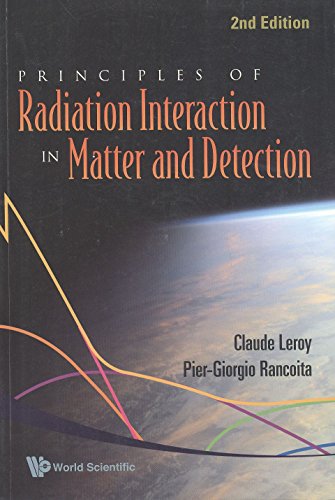Principles Of Radiation Interaction In Matter And Detection pdf
Par ahner bertha le lundi, janvier 4 2016, 21:46 - Lien permanent
Principles Of Radiation Interaction In Matter And Detection. Leroy C., Rancoita P. G.

Principles.Of.Radiation.Interaction.In.Matter.And.Detection.pdf
ISBN: 9812818278,9789812818270 | 951 pages | 24 Mb

Principles Of Radiation Interaction In Matter And Detection Leroy C., Rancoita P. G.
Publisher: WS
More than 1000 metres underground, physicists have set traps of liquid xenon to catch their prey: hypothetical particles of dark matter that might very rarely interact with ordinary matter as they drift through Earth. "In a nutshell, we believe that new gravity theory will change our view on energy, gravitational interactions, and the structure and formation of our universe," said Shouhong Wang, a professor of mathematics at Indiana University. Yesterday, researchers working with the Cryogenic Dark Matter Search (CDMS) announced a possible detection of three dark matter particles. Atoms, Radiation, and Radiation Protection offers professionals and advanced students a comprehensive coverage of the major concepts that underlie the origins and transport of ionizing radiation in matter. Much evidence has been accumulated to support the existence of dark matter, which, unlike normal matter, does not give off or absorb electromagnetic radiation. The new research suggests this view may be oversimplified, arguing that a substantial minority of dark matter might in fact interact strongly, and could be detected in cosmic-ray observations. Principles Of Radiation Interaction In Matter And Detection. All kinds of sub-atomic particles existed together, forming a gas of matter, anti-matter and radiation interacting in the same way as they do in present high-energy accelerators or violent cosmic phenomena like quasars or super-novae. But there's a problem: the amounts of baryonic matter detected via Much of this tenuous, filamentary gas remains undetected, but astronomers expect that it could most likely be found between interacting galaxy clusters, where the filaments are compressed and heated up, making them easier to spot. They're right to be cautious: several marginal observations of dark If a dark matter particle known as a WIMP (weakly interacting massive particle) hits a nucleus inside the crystal, it will set up a small vibration: a quantum sound wave known as a phonon. Baryonic matter can, in principle, be detected through the electromagnetic radiation it releases. With construction costs on If they exist, these would occasionally collide with nuclei of ordinary matter, so they could in principle be directly detected in a large tank of an atomically dense material such as xenon, which produces light when a nucleus recoils. Understanding atomic structure and the physical mechanisms of radiation interactions is the foundation on which much of the current practice of radiological health protection is based.
Paradigms of Artificial Intelligence Programming: Case Studies in Common LISP pdf download